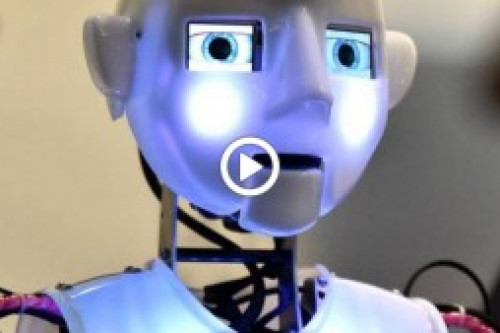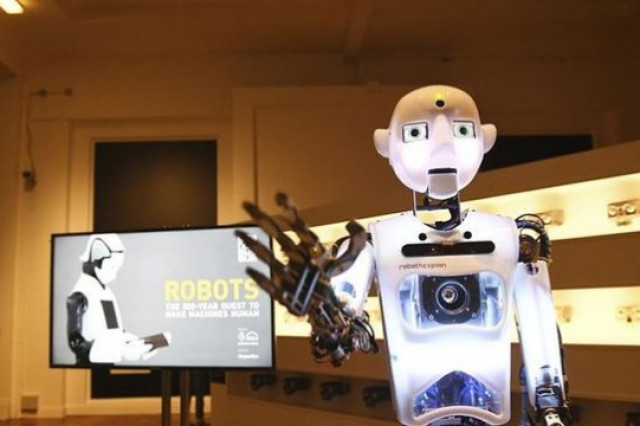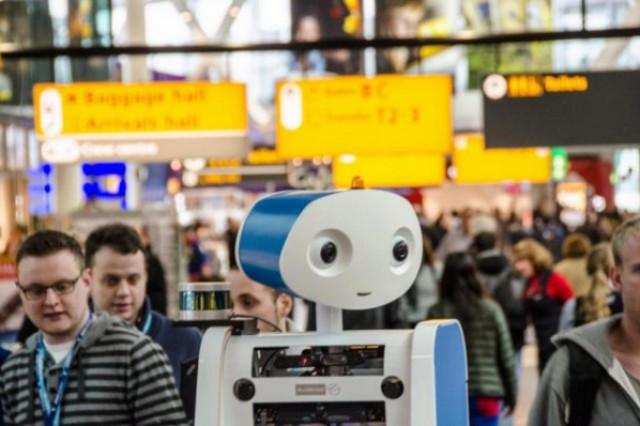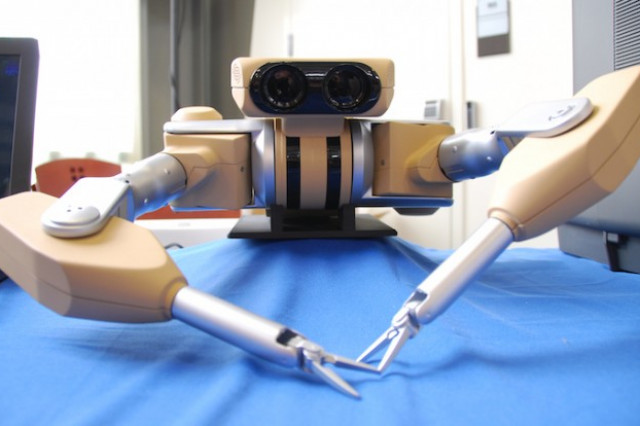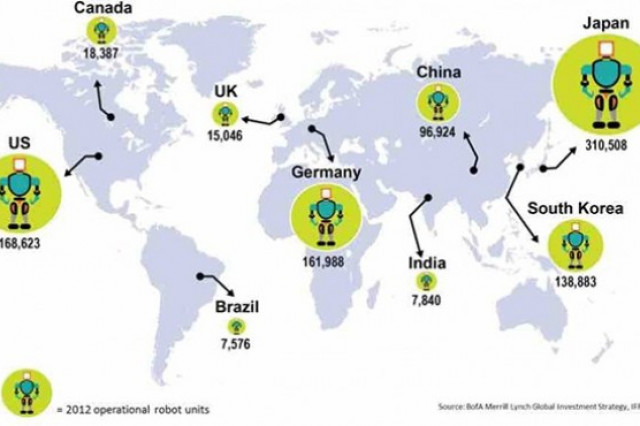Robots are arriving... but not that soon
In its annual model of the Emerging Technologies Emerging Technologies Hype Cycle. In August 2016, the American consulting firm Gartner grouped together a set of technologies in the age of intelligent machines. These included smart dust, machine learning, virtual and cognitive personal assistants, expert advisors, intelligent data discovery, intelligent workplace, intelligent robots, standalone vehicles, drones, people analysis, and so on. According to Gartner, these will be the most disruptive technologies in the next ten years, because of radical changes in processing capacity and the management of huge amounts of data, along with unprecedented advances in neural networks. The EU 2020 Robotics Strategy agrees with this time horizon and its huge impact on society.
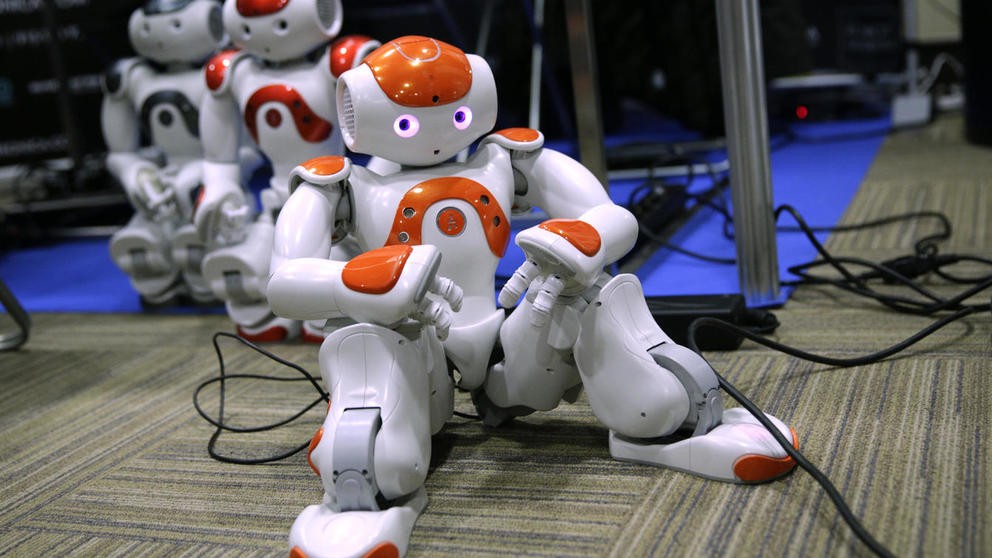
Among the technologies that will facilitate communication between machines are also those related to the Internet of Things (IoT), which are estimated to take 5 to 10 years to reach early adoption. To support the processing needs of emerging technologies, the use of new materials such as "graphene" and quantum computing that would still be more than 10 years away will be relevant. Other key supports for robotics include bringing robots to the cloud or cloud robotics and the robots operating system or ROS.
Regarding industrial robot types and their adoption for use in automatic applications in industries, those that are already being adopted or are going to be adopted soonest are services robots. These are designed to support, accompany and care for people, sharing the human environment and performing assigned tasks that denote basic intelligence. Robots will take longer to appear, depending on its degree of autonomy and complexity of tasks to perform (unstructured, complex or requiring interaction with humans naturally).
The World Robotics Report published by the International Federation of Robotics (IFR) in 2016 estimates that the automotive industry is the largest consumer of industrial robots with 70% of robots installed, followed by electronics with 18% and metallurgy with 13%. This report also points out that the number of domestic robots will reach 31 million between 2016 and 2019. To use a comparative order of magnitude, this figure would be far from the more than 2 thousand million connected televisions that Strategic Analytics estimates for 2018, at take-up rates of less than 2%.
In short, from the point of view of the maturity of technologies, previous analyzes suggest that there is still some way to go and new knowledge to be acquired, and we would need to integrate the different technological pieces. Influenced expectations remain in the media, much of it is echoed in conferences (Robobusiness, Global Robo Expo, Robotworld, and so on) and there is hardly any negative press, indicative that the technology is not yet mature enough.
There is still some way to go and new knowledge to be acquired, and we would need to integrate the different technological pieces
Other innovation indicators such as the number of patents, the number of developers of applications for ROS, the artificial intelligence sales revenues, if compared to other segments, a possible bubble in access to artificial intelligence financing, and the adoption of robots still being low, would point to the fact that robot technologies are still in their childhood. However, it is likely that in the next decade there will be a turning point once the adoption rate passes 16%-20%.
First order effects. (Massive) unemployment...?
In the field of first-order effects (economic, fast and relatively easy to measure), the prospects do not seem to be as promising as Andrés Ortega predicts in The Unstoppable Robots' March. Numerous private and public sources (Bank of America, Merrill Lynch, Bank of England, Caixa Bank, World Economic Forum, McKinsey, Telefónica Foundation), as well as academia, according to artificial intelligence researchers such as the Japanese Noriko Arai, who predicts the mass displacement of work, research articles among which are Frey and Osborne of Oxford media, which feed most of the previous reports or the latest by Brynjolfsson and McAfee, would suggest that between 30% and 60% of jobs are at risk of automation or will be replaced by robots, which could contribute to the disappearance of a third of global employment, as well as an "emptying out" of the middle class.
Not only the less qualified routine jobs will be those that would disappear, but also we can predict that those of the most qualified, the "white collar" ones, will also be affected, as Martin Ford said in their book The rise of the robots: Technology and the threat of mass unemployment. These sources are entrenched in a pessimistic view, suggesting that more jobs will be destroyed than they will be created. However, some of them may include several methodological problems, one of which is the difficulty in characterizing a job as routine per se, because even within the same work routine variations are important, according to Professor Óscar Pérez Zapata, in a review carried out for the Ideas Observatory of a Eurofund report on changes in the nature of work.
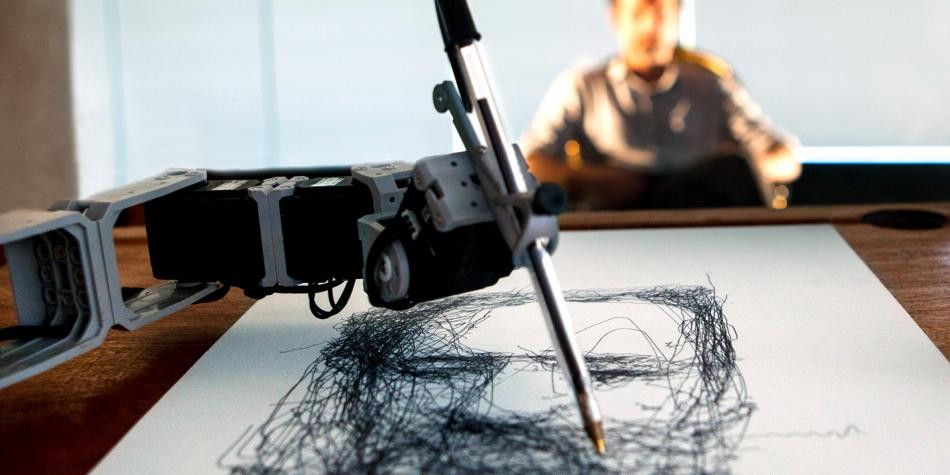
In the upbeat version, we find authors such as James Bessen, an economist and professor at the University of Michigan who speaks of the dilemma of automation: as computers begin to do people's work, people's needs often Increase too. The automation of tasks would not necessarily imply loss of employment, but occupations that mostly use computers would be the ones that would have had the greatest growth to date, while those that did not would suffer the greatest losses. The International Federation of Robots seems to agree with this thesis, in the automotive sector in Germany, the number of employees increased by 2.5% on average between 2010 and 2015 while the number of robots grew by 3% annually.
Or in the perspective of Thomas Davenport and Jula Kirby (Harvard Business Review 2015 and 2017) who propose to change the outlook. Instead of focusing on tasks that humans will no longer be able to do, we must think of the new one that man can do if he has machines as support. They also suggest five strategies to deal with automation, to surpass machine skills, to focus on skills that do not have machines or tasks that cannot be automated, to work with machines or to create the next generation of artificial intelligence machines. To this more optimistic side, prospective reports also lend their support, for example, the one made for the UK government on the new professions of the future that are going to appear, such as body parts manufacturers, nano-doctors, wellness specialists for the elderly, surgeons of increased memory, and so on.
As pointed out in a report by the Fundación Telefónica, to an intermediate degree, the pessimistic scenario would be slowed down by public administrations that would try to correct imbalances through policy-making. Among the policies that are beginning to be discussed are reducing working hours, moving fiscal regimes to capital, discouraging the replacement of labour in the short term, covering higher-demand jobs (for example IT) or the guarantee of a basic universal income, which some countries like Finland are testing and are propounded by entrepreneurs, sociologists, philosophers, and so on such as Elon Musk, Martin Ford, Naomi Klein and Philippe Van Parijs. These policies contrast with those proposed by Bessen in favour of specialization and standardization in the more technical skills required by the jobs of greater demand or those of the World Economic Forum report of 2016, which emphasized the "soft" 21st century, which includes critical thinking and creativity.
A reflection on the effects of second order, before those of robots, those of ICT
New professions of the future are going to appear, such as body parts manufacturers, nano-doctors, wellness specialists for the elderly, surgeons of increased memory, and so on
The technology that one day was created for a specific purpose has in the long run effects that are difficult to predict, the so-called second order changes that change organisations and societies. We have not yet digested what the ICT revolution means in the development of new ways of working and organizing in a new paradigm, when we begin to superimpose the beginning of another new industrial revolution, the fourth, that of artificial intelligence, robotics, the Internet Of things, driverless vehicles, quantum computing...
According to the Chilean-British economist Carlota Pérez, who has studied the patterns of technological revolutions of the last two centuries, we would now be in the re-ordering interval of the ICT revolution. This gap is between the period of installation of new technologies (ICT, Internet) and a period of deployment of greater prosperity which exploits the full technological potential.
This re-adjustment interval would be characterized by a polarization and increase of inequalities between rich and poor and a growing mismatch between the economy by the installation of the previous technology and the social regulatory system that would not work for the second period to come. For her, if we want to move towards the new paradigm of the second period, towards greater well-being in which technology is used in all areas of society and for new forms of work, we should seek the solution in policies and not in the technology itself.
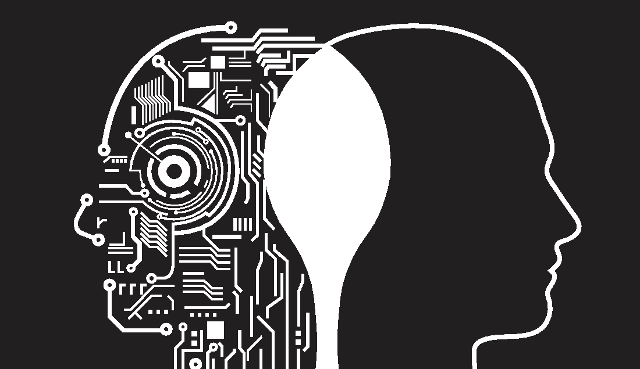
Before socializing with robots, we would have to make the most of the capabilities that ICTs and the Internet have provided us with to contribute to solving the great challenges of society. Among the second-order effects (more sociocultural, that permeate everything and are the most difficult to predict and measure) of ICT, we would have to observe its consequences in the new ways of working and organizing. A paradigmatic example is the so-called gig economy/collaborative economy. Alibaba surpasses Walmart as the largest volume retailer and employs 47% women, AirBnB will outnumber the largest hotel chain, and in mid-2016, the Iberian Chinese Didi Chuxing had 5000 employees with an average age of 26 working for him, and yet the policies and laws to protect the employees of these platforms and to favour this collaborative economy that breaks with the old ways of working are in an embryonic state.
In his interview at the Davos Economic Forum in 2017, Jack Ma of Alibaba was sending a final message to all countries closely aligned with Carlota Pérez's research, "the next 30 years are critical for the world, each revolution lasts about 50 years, the first 20 years are from technology companies, the next 30 years are about the implication of technology. In the first 20 years, we had to eBay, Amazon, Facebook, Google, Alibaba, and the next 30 are to make technology Inclusive for the world to change. "
Besides waiting for the arrival of the robots, there is much more at stake in the next decade.



